Tibet Train Oxygen: Is There Oxygen Supply on Tibet Trains and How to Use It?
To help passengers adapt well to altitude changes during the journey, Tibet trains are equipped with two types of oxygen supply systems. But where are these systems located, and how do you use them?
In this guide, we will share detailed information about the oxygen supply systems on Tibet trains, explaining how they work and offering our warm tips for managing altitude sickness. Read on to find out everything you need to know before your Tibet train journey.
Is There Oxygen Supply on All Tibet Trains? Yes, Two Types are Available
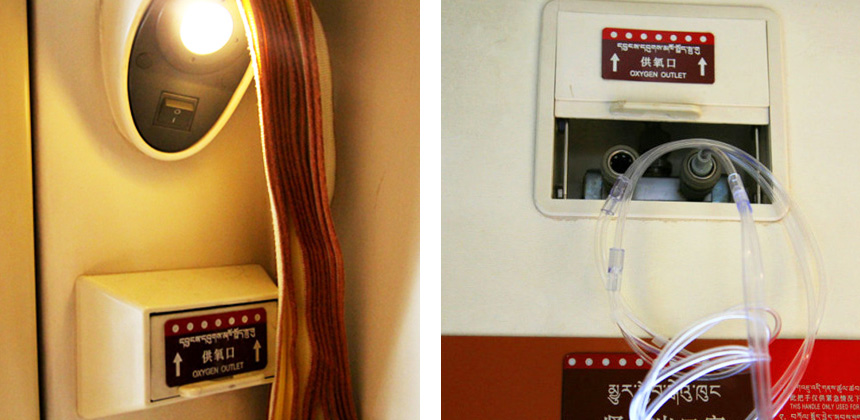 Oxygen outlets and the installed tubes on Tibet trains
Oxygen outlets and the installed tubes on Tibet trainsAll Tibet trains running on the Qinghai-Tibet Railway are specially designed to provide a comfortable and safe journey in high-altitude areas. They are equipped with two types of oxygen supply systems:
#1 Dispersion (Automatic) Oxygen System
The dispersion oxygen system is the main oxygen supply system on the train. It delivers oxygen by mixing it with the air in the air-conditioning system, ensuring that the oxygen content in each carriage is maintained at an appropriate level.
At the very beginning of the journey, the Qinghai-Tibet train does not start supplying oxygen as it just passes through areas with normal altitudes like most places in China. When reaching Golmud Station(at an altitude of approximately 2,800 meters), the dispersion oxygen system begins to work.
After departing Golmud, the average elevation gradually climbs to 4,000-4,500 meters, with the highest point at Tanggula Pass reaching 5,072 meters. Therefore, the train's oxygen supply system will operate all the time after Golmud, providing passengers with the necessary oxygen to ensure their comfort during the following journey.
#2 Private Oxygen Outlets
This kind of oxygen supply exists in the form of independent outlets and all the outlets are free for all passengers. Anyone who feels short of breath can use the outlet at any time.
As mentioned before, the dispersion oxygen system starts operating at Golmud Station, and just at the same station, the train conductor will hand out a plastic bag with a transparent tube to every passenger. Thus, when you feel discomfort caused by high altitude, you can use the private outlet to ease the sickness.
Whether your Tibet train ticket is for a hard seat or a soft sleeper, the oxygen outlets are easy to find: they are either on the wall or under the seat. Meanwhile, the way to use the outlets is quite easy. Besides, the train staff are very familiar with this equipment, so do not hesitate to ask for their help if you have any problems.
When to Use the Oxygen Supply? Common Signs of Altitude Sickness
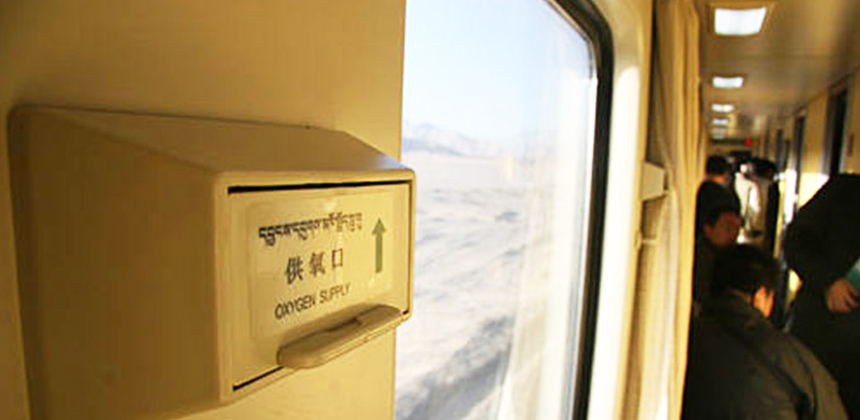 Oxygen supply in soft sleeper carriage of Tibet trains
Oxygen supply in soft sleeper carriage of Tibet trainsPassengers who feel any of the altitude sickness symptoms should use the private oxygen supply to relieve the discomfort. Altitude sickness is also called acute mountain sickness (AMS), and it occurs when you arrive at high altitudes and your body cannot get used to it due to a lack of oxygen.
Altitude sickness can be roughly categorized into two types: acute and chronic. Some common signs of altitude sickness include headaches, dizziness, palpitations, shortness of breath, or nausea. For acute altitude sickness, these symptoms usually appear within 24 to 48 hours of entering high-altitude areas. Chronic altitude sickness, on the other hand, presents with more persistent symptoms such as headaches, dizziness, and loss of appetite.
The key to treating altitude sickness lies in early detection and intervention. Mild cases often resolve on their own with rest, while moderate to severe cases require immediate oxygen therapy, medication, and other appropriate treatments.
When Is the Most Difficult Time for Altitude Sickness on the Tibet Train?
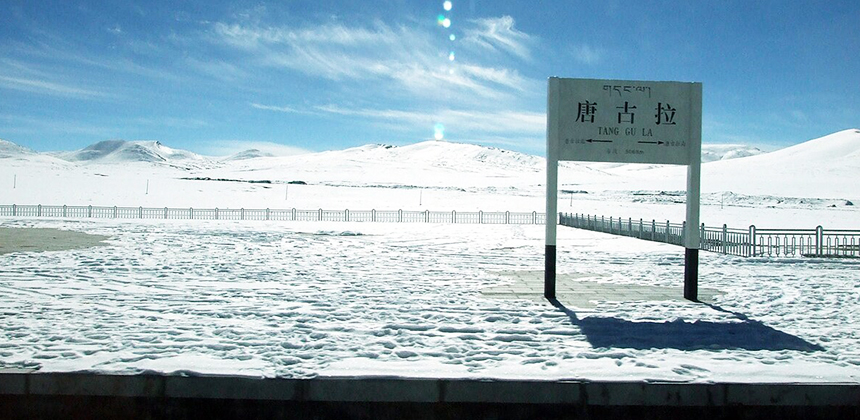 The Tangular Station - the highest station along Tibet Train route
The Tangular Station - the highest station along Tibet Train routeAs we have mentioned before, altitude sickness is caused by high altitudes, so undoubtedly the most difficult time on the Tibet Train tends to hit at the highest points along the way. The stretch between Golmud and Nagqu is typically the most challenging part of the journey in terms of altitude sickness. This section of the railway traverses some of the highest points on the Qinghai-Tibet Plateau.
As the train moves towards the Kunlun Mountain Pass at 4,800 meters, the altitude increases rapidly. However, the most challenging point still waits—that is the Tanggula Pass. This Pass stands at an elevation of 5,072 meters and it is the highest point on the entire railway and the world's highest railway pass.
The air at Tanggula Pass is extremely thin and many passengers experience the most severe symptoms of altitude sickness around this area. Usually, the Tibet train takes a few hours to cross this high-altitude section, giving passengers enough time to feel the effects of the altitude. And with the oxygen supply systems on the train, the impact of this challenging stretch can be significantly reduced.
How to Use the Oxygen Outlet? Simple, Free and Convenient
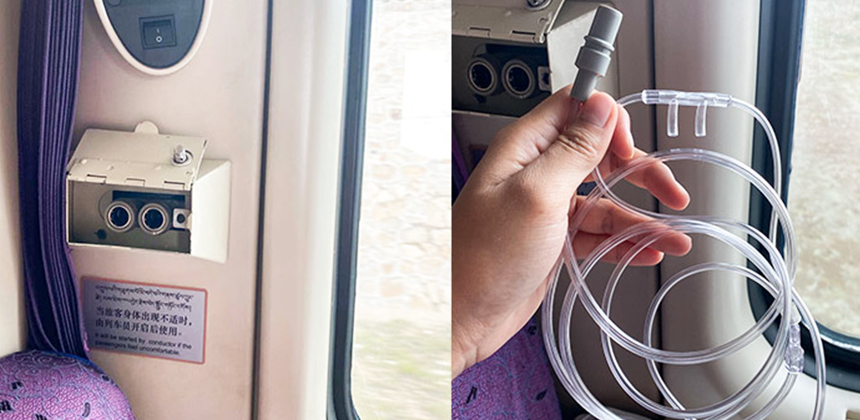 Using the oxygen outlet on Tibet train is simple.
Using the oxygen outlet on Tibet train is simple.#1 Find the oxygen outlet near your seat or bed
To use the oxygen outlets, the first step is to locate where they are. For passengers in sleeper cabins, you can find them on the wall near your bed. They can easily be spotted as they are usually marked clearly, often with a red cover that has “OXYGEN OUTLET” written on it.
For passengers in hard seat carriages, just look under your seat and you will find the outlets. All the oxygen outlets are designed to be accessible, whether you're sitting or lying down.
#2 Request a free oxygen tube from the train staff
Once you've located the oxygen outlet, simply ask a train attendant for an oxygen tube. These tubes are provided free of charge. The staff is well-trained to handle passenger requests related to oxygen use and can guide you through the process if you have any questions.
#3 Connect the tube and breathe normally
Take the oxygen tube and insert one end into the oxygen outlet. The tube is designed to fit snugly, ensuring a proper connection. Once connected, place the other end of the tube near your nostrils. There are usually two small prongs on this end that fit comfortably under your nose.
Then, simply breathe normally. The oxygen will flow through the tube and into your nostrils, providing you with the extra oxygen your body needs at high altitudes. You don't need to do anything special with your breathing; just let the oxygen do its work as you relax and enjoy the journey.
What If I Still Suffer Altitude Sickness After Using Oxygen Supply on Tibet Train?
Different people have different reactions to high altitudes, which has nothing to do with factors such as gender and age. Similarly, the symptoms and severity of altitude sickness vary from person to person.
Some passengers might notice their altitude sickness symptoms stick around even after using the oxygen. No need to stress if that happens - Tibet trains have professional medical team on board who can help with basic care, and even step in for emergencies if necessary.
Having received specialized training, the medical staff will first conduct a basic medical examination to assess the severity of your condition and provide appropriate treatment accordingly, including additional oxygen therapy and medications to relieve symptoms such as headaches or nausea.
After that, the medical team will continue monitoring your physical condition to ensure that you get better. Additionally, they will offer advice on dealing with altitude sickness symptoms for the rest of your journey.
More Warm Tips for Avoiding Altitude Sickness on Tibet Train
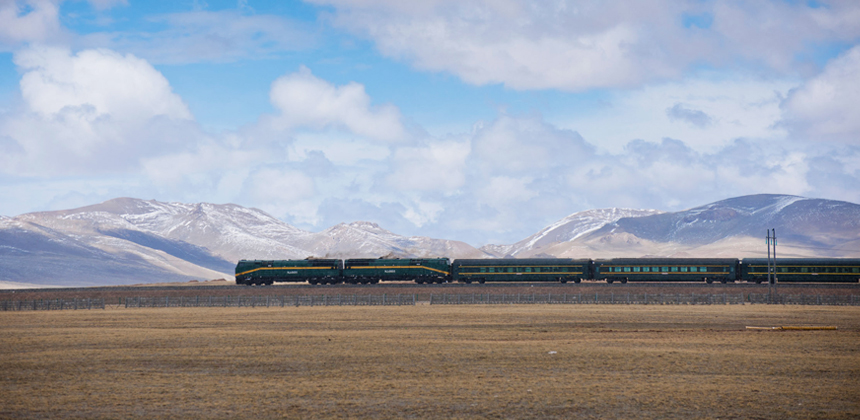 Tibet train through high mountains
Tibet train through high mountains#1 Keep a positive mindset
Your mental state can have a significant impact on how you experience altitude sickness. Stress, anxiety, and other downbeat feelings can make those symptoms worse, so you’d better try to stay calm, relaxed, and positive about the wonderful journey ahead. A good mindset is the best medicine to help with altitude sickness.
#2 Enough rest and sleep onboard
Enough rest is another effective way to help your body better adjust to the changing altitude, so make sure to get enough sleep during the train journey. With the soothing motion of the Tibet train, you may easily fall asleep in the comfortable seats or bunks.
Do not wear yourself out by rushing around the train or doing anything too strenuous. Instead, sleep a bit more to save energy—let your body focus on getting used to the altitude.
#3 Stay warm and hydrated, avoid alcohol and heavy meals
High-altitude areas can be cold and dry, so it’s smart to dress in layers and stay warm. Meanwhile, drink plenty of water to stay hydrated and keep your body functions normal.
Avoid consuming alcohol and heavy, greasy meals. Sometimes, altitude sickness can simply feel like a hangover, so drinking alcohol on the train will only make things worse.
Heavy meals can also put additional stress on your digestive system, which may already be affected by the high altitude. Opt for light, nutritious foods that are easy to digest, such as fruits, vegetables, and whole grains.
Conclusion
Passengers will enjoy a more comfortable and reassuring journey to Tibet, thanks to the support of two types of oxygen supply equipment and the reliable professional medical staff on the Tibet train.
Take time to learn how the oxygen systems work, know when to use those outlets, and keep the tips here in mind, and you can cut down altitude sickness’s impact as much as possible, making a smooth, easy journey within easy reach.
Therefore, don't let the fear of altitude sickness hold you back from embarking on this amazing adventure. Hop on the Tibet train and get ready to be amazed by the breathtaking landscapes and unique culture of Tibet.
Learn More about the Oxygen Supply on Tibet Trains by Real Photos
More about Tibet Train Oxygen: Is There Oxygen Supply on Tibet Trains and How to Use It?

 BACK
BACK

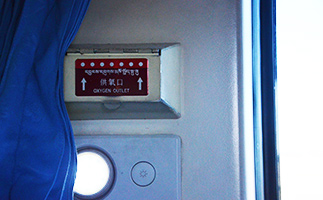
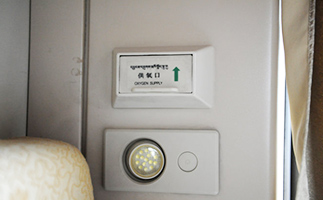
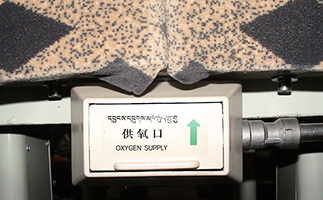

0 Comment ON "Tibet Train Oxygen: Is There Oxygen Supply on Tibet Trains and How to Use It?"